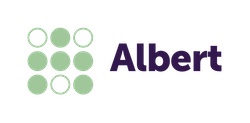Data plays a critical role in strategic workforce planning (SWP), providing the foundation for informed decision-making and enabling organizations to align their human capital with long-term objectives. However, the success of SWP depends on the quality and accuracy of the data collected. In this blog post, we’ll discuss how to collect and clean data for your first strategic workforce planning initiative, ensuring that your organization is well-prepared for this important process.
1. Identify Relevant Data Sources
The first step in collecting data for SWP is to identify the relevant data sources within your organization. Some common sources include:
- Human Resources Information Systems (HRIS)
- Performance Management Systems
- Talent Management Systems / Talent Experience Platform / Skills Mapping Solutions
- Learning Management Systems
- Employee Surveys
Consider both quantitative and qualitative data to gain a comprehensive understanding of your workforce. Collaborate with HR professionals, line managers, and IT specialists to ensure access to the necessary data.
2. Collect Data Consistently
When gathering data from multiple sources, it’s essential to ensure consistency in the way the data is collected. Develop a standardized process for data collection, including consistent definitions, metrics, and methodologies. This consistency will make it easier to aggregate and analyze the data and reduce the risk of errors or misinterpretations.
3. Clean and Prepare the Data
Before analyzing the data, it’s essential to clean and prepare it to ensure its accuracy and reliability. Some common data cleaning tasks include:
- Removing duplicate records
- Correcting data entry errors
- Filling in missing data or addressing inconsistencies
- Standardizing data formats and units of measurement
- Investing time in data cleaning will help minimize errors and improve the overall quality of your SWP analysis.
4. Maintain Data Privacy and Security
When collecting and cleaning data, it’s essential to adhere to data privacy and security regulations, such as the General Data Protection Regulation (GDPR) or the California Consumer Privacy Act (CCPA). Ensure that your organization has the necessary permissions to access and process employee data and that all data handling processes are compliant with relevant regulations. Implement strict access controls and data encryption measures to protect sensitive information.
5. Develop a Centralized Data Repository
Once the data has been collected and cleaned, store it in a centralized repository or database that can be easily accessed and updated by all relevant stakeholders. This centralization will make it easier to manage and maintain the data, ensuring that everyone involved in the SWP process has access to the most up-to-date and accurate information.
6. Regularly Update and Monitor Data Quality
Strategic workforce planning is an ongoing process, and the data used in the analysis should be regularly updated and monitored for quality. Establish a routine for data maintenance, including updating records, addressing inconsistencies, and evaluating the overall quality of the data. By maintaining accurate and up-to-date data, your organization will be better equipped to make informed SWP decisions and adapt to changing workforce needs.
Conclusion
Collecting and cleaning data for strategic workforce planning is a critical step in ensuring the success of the process. By identifying relevant data sources, collecting data consistently, cleaning and preparing the data, maintaining data privacy and security, developing a centralized data repository, and regularly updating and monitoring data quality, your organization will be well-prepared to embark on its first SWP initiative. Investing time and effort in data management will pay dividends in the form of more accurate, reliable, and actionable workforce insights, positioning your organization for long-term success.


